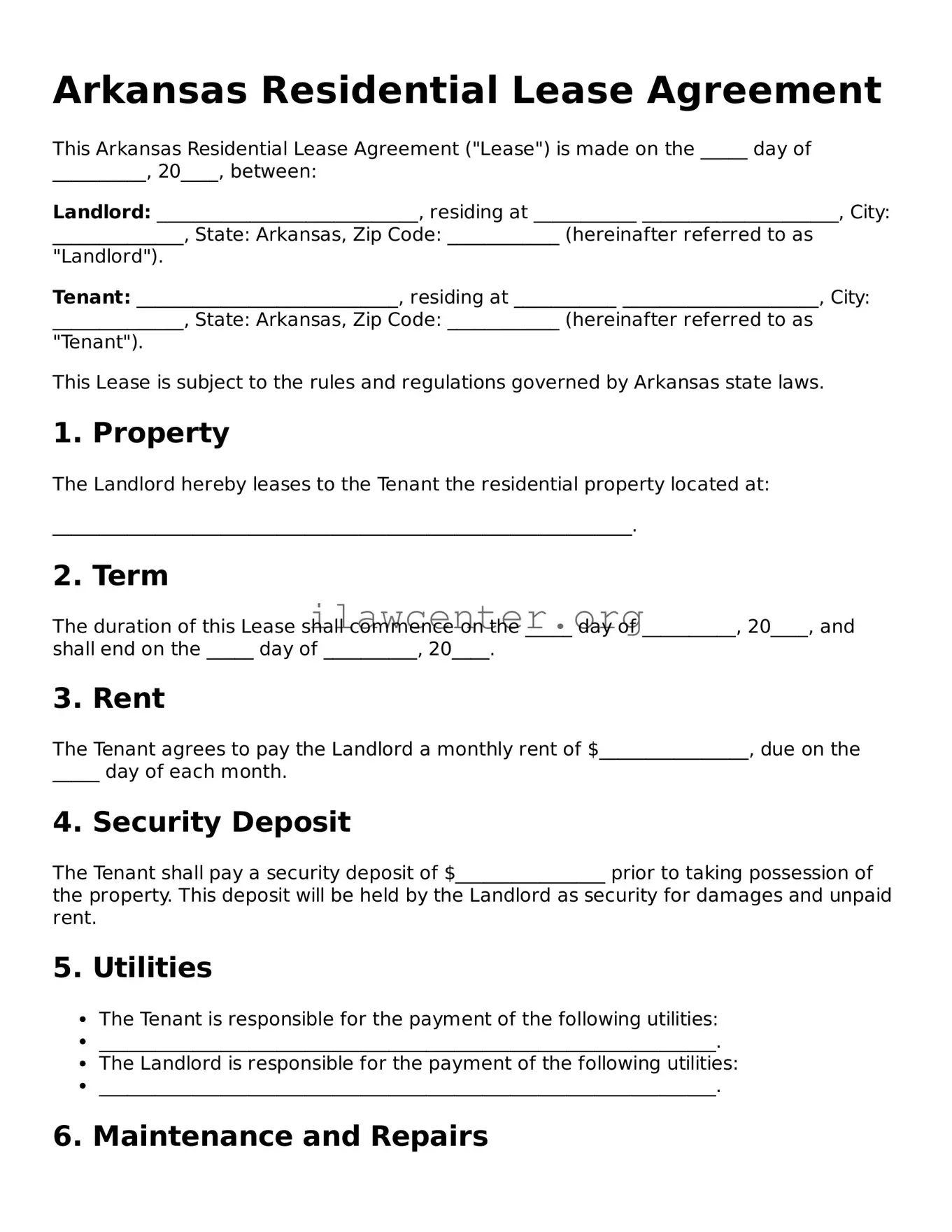What is the Arkansas Residential Lease Agreement form?
The Arkansas Residential Lease Agreement form is a legal document that outlines the terms and conditions under which a landlord rents a residential property to a tenant. It includes important details such as the rental rate, duration of the lease, responsibilities of both parties, and other essential provisions that govern the tenancy.
Who needs an Arkansas Residential Lease Agreement?
This agreement is necessary for both landlords and tenants. Landlords need it to establish clear rules regarding the rental terms and to protect their property rights. Tenants benefit from having a written document that outlines their rights and obligations, making it easier to avoid misunderstandings during the rental period.
What key elements should be included in the lease agreement?
An effective lease agreement should include several key elements: the names of the landlord and tenant, the property address, rental payment details (amount, due date, and payment methods), duration of the lease, security deposit amount, and any specific rules regarding property use, pets, and maintenance responsibilities.
Can the lease agreement be modified?
Yes, the lease agreement can be modified, but both parties must agree to any changes. Modifications should be documented in writing and signed by both the landlord and tenant to ensure clarity and avoid disputes. It’s always best to keep a record of any amendments to the original agreement.
What happens if the lease is broken early?
If a tenant breaks the lease early, they may be liable for certain penalties, such as forfeiting the security deposit or continuing to pay rent until a new tenant is found. Landlords are usually required to make reasonable efforts to re-rent the property to mitigate damages. Specific terms related to early termination should be clearly outlined in the lease agreement.
Is a security deposit required in Arkansas?
While not legally required, most landlords do request a security deposit. This deposit serves as a financial safeguard for the landlord against potential damage or unpaid rent. Arizona law typically limits security deposits to one and a half times the monthly rent. Make sure to understand the conditions under which the deposit may be withheld after the lease ends.
Are there any disclosures required in a residential lease agreement?
Yes, landlords are often required to disclose certain information to tenants. This may include the presence of lead-based paint in properties built before 1978, details about the landlord's identity, and any applicable local housing code regulations. These disclosures help protect tenants’ safety and rights.
How long is a typical residential lease in Arkansas?
Residential leases can vary in length. The most common duration is one year, but leases can also be month-to-month or shorter, depending on the needs of the landlord and tenant. A longer lease may provide more stability, while a shorter term offers more flexibility for both parties.
What are the rules regarding rental payments?
The lease agreement should clearly state how much rent is due, when it’s due, and how it should be paid. Common payment methods include checks, electronic transfers, or cash. It’s essential for both parties to understand the consequences of late payments, which could include fees or eviction procedures.
Can a tenant sublet the property?
Subletting may be allowed, but this generally depends on the terms set forth in the lease agreement. Landlords may require written permission for a tenant to sublet or allow someone to share the rental space. Understanding this clause can prevent future disputes and ensures everyone is on the same page.
